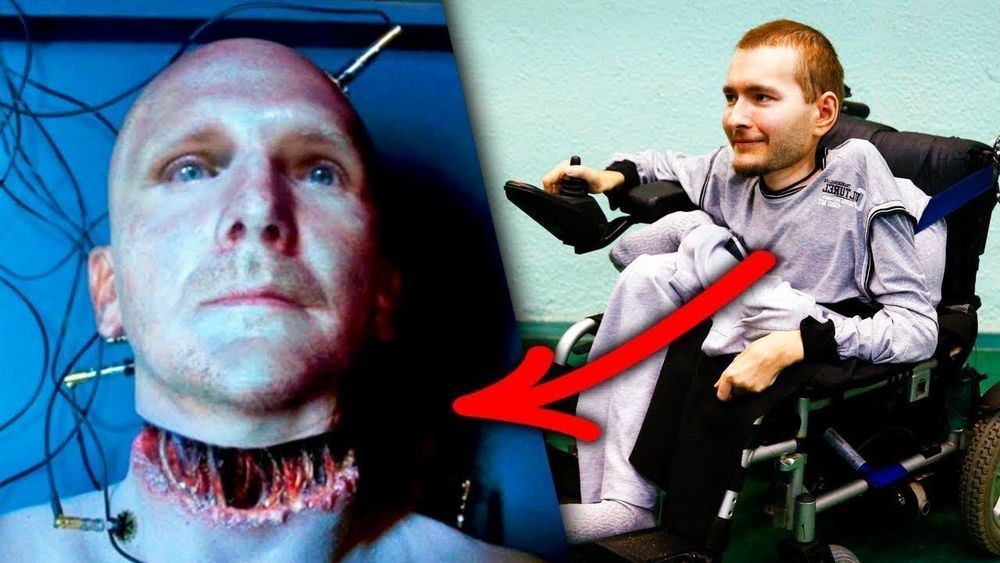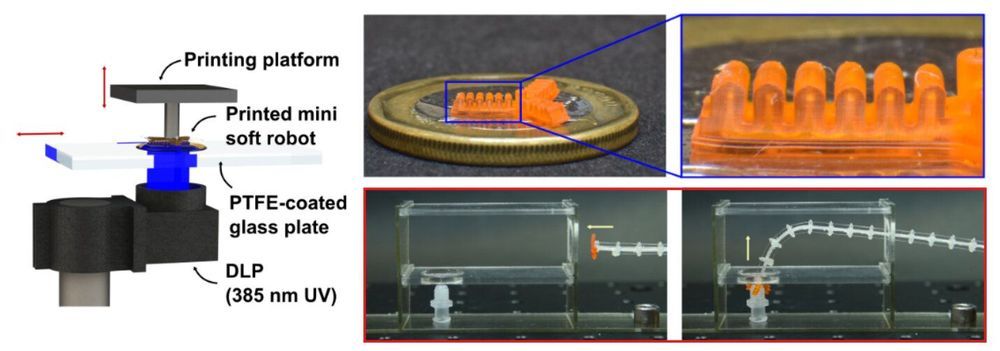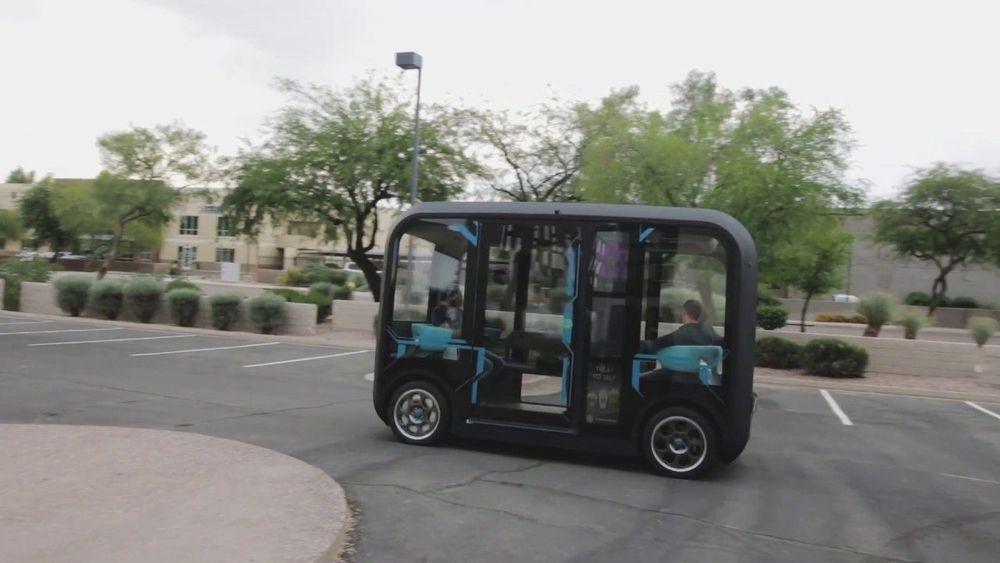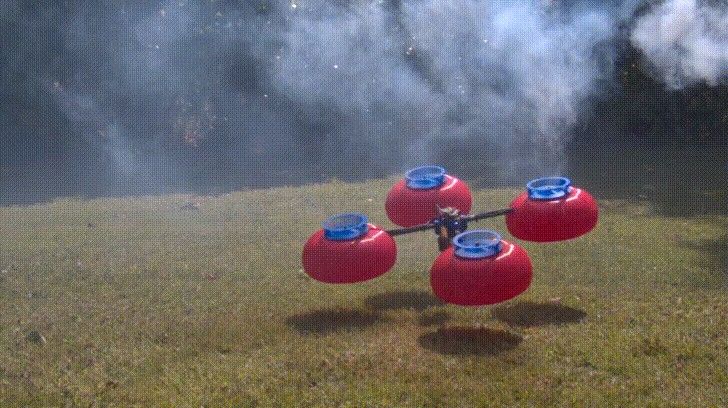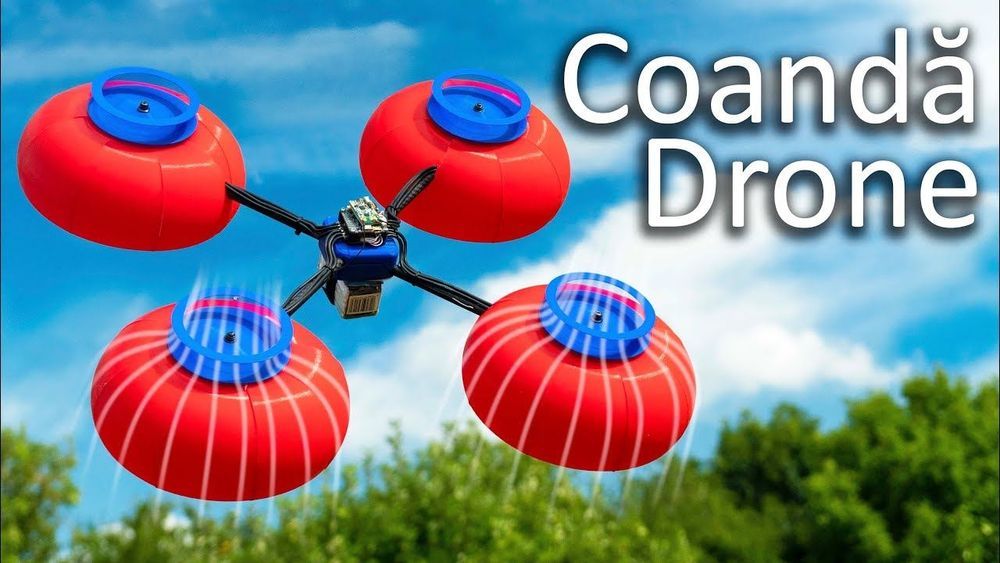Category: 3D printing – Page 64
This is interesting because it has today type applications, but I wonder, what about a 3D printed body? Remember the movie Starship Troopers when they repaired that guy’s leg in the water tank thing? I’ve seen similar devices in other movies. Could be easier than removing the head completely and safer, when the ability to print human tissues is feasible.
GUYS HOPE YOU LIKE THE VIDEO PLEASE LIKE AND SUBSCRIBE TO MY CHANNEL AND HIT THE BELL ICON.
And if you have any question related to the video then please comment down below.
Soft robots are a class of robotic systems made of compliant materials and capable of safely adapting to complex environments. They have seen rapid growth recently and come in a variety of designs spanning multiple length scales, from meters to submicrometers.
In particular, small soft robots at millimeter scale are of practical interest as they can be designed as a combination of miniature actuators simply driven by pneumatic pressure. They are also well suited for navigation in confined areas and manipulation of small objects.
However, scaling down soft pneumatic robots to millimeters results in finer features that are reduced by more than one order of magnitude. The design complexity of such robots demands great delicacy when they are fabricated with traditional processes such as molding and soft lithography. Although emerging 3D printing technologies like digital light processing (DLP) offer high theoretical resolutions, dealing with microscale voids and channels without causing clogging has still been challenging. Indeed, successful examples of 3D printing miniature soft pneumatic robots are rare.
From afar, Olli resembles many of the “future is now!” electric autonomous shuttles that have popped up in recent years.
The tall rectangular pod, with its wide-set headlights and expansive windows nestled between a rounded frame, gives the shuttle a friendly countenance that screams, ever so gently, “come along, take a ride.”
But Olli is different in almost every way, from how it’s produced to its origin story. And now, its maker, Local Motors, has given Olli an upgrade in hopes of accelerating the adoption of its autonomous shuttles.
SUBSCRIBE to Barcroft TV: http://bit.ly/Oc61Hj
A DETERMINED TEENAGER with bionic arms champions diversity by showing the world it’s ‘cool to be different.’ Tilly Lockey, from County Durham, UK had both her arms amputated at 15 months old after contracting Group B meningococcal septicaemia. The 13-year-old was the first teenager in Britain to receive a pair of the 3D-printed bionic arms in 2016. Constantly in demand for her modelling work, Tilly extensively travels the world raising awareness for meningitis — the condition which almost took her life as a baby. Follow her story here:
https://www.instagram.com/tilly.lockey/
https://www.youtube.com/channel/UC5hrVolbwN8XsWbNTRpoIMA
Barcroft TV would like to thank Debbie Todd for her photography in this video: https://www.instagram.com/debbietoddphotographer
Video Credits:
Videographer / director: Ian Paine
Producer: Gareth Shoulder, Ruby Coote
Editor: Ciara Cecil
Click here to follow your favourite Barcroft shows on Instagram!
Barcroft TV — https://www.instagram.com/barcroft_tv/
Born Different — https://www.instagram.com/borndifferentshow/
Shake My Beauty — https://www.instagram.com/shakemybeauty/
Hooked On The Look — https://www.instagram.com/hookedonthelookshow/
Beast Buddies — https://www.instagram.com/beastbuddiesshow/
Ridiculous Rides — https://www.instagram.com/ridiculousridesshow/
Snapped In The Wild — https://www.instagram.com/snappedinthewild/
Dog Dynasty — https://www.instagram.com/dogdynastyshow/
For more amazing content, click here!
MOUNTAIN VIEW (KPIX 5) — A Silicon Valley 3D printing company has been awarded a contract with NASA to launch a project creating a satellite that will manufacture and assemble itself in orbit.
A top NASA administrator visited Mountain View’s Ames Research Center Monday and toured state-of-the-art facilities of Made In Space. NASA awarded Made in Space a $73 million contract to launch Archinaut by 2022, an “autonomous robotic manufacturing and assembly platform.”
Jim Bridenstine, the space agency‘s top official, called Ames a “jewel” and praised the work of Made In Space as “impressive.” The manufacturing company 3D prints structures, parts, tools and more while in orbit.
Researchers from the Harvard John A. Paulson School of Engineering and Applied Sciences (SEAS) and Caltech have developed new soft robotic systems that are inspired by origami. These new systems are able to move and change shape in response to external stimuli. The new developments bring us closer to having fully untethered soft robots. The soft robots that we possess today use external power and control. Because of this, they have to be tethered to off-board systems with hard components.
The research was published in Science Robotics. Jennifer A. Lewis, a Hansjorg Wyss Professor of Biologically Inspired Engineering at SEAS and co-lead author of the study, spoke about the new developments.
“The ability to integrate active materials within 3D-printed objects enables the design and fabrication of entirely new classes of soft robotic matter,” she said.
A South African professor, Mashudu Tshifularo, and his team at the University of Pretoria pioneered the world’s first middle ear transplant using 3D-printed bones. Here is how he carried out the successful surgery.
That vast majority of quadcopter drones produce thrust in a very straightforward way: the propellers push air downwards at a high speed which creates lift. But that doesn’t mean other means of propulsion can’t be used. YouTuber Tom Stanton often experiments with unconventional drones and methods of propulsion, and in his newest video he has made a drone fly using the Coandă effect.
The Coandă effect, named after Romanian inventor Henri Coandă, describes the propensity for fluids — including air — to cling to convex surfaces as they move across them. That’s because a low pressure zone is created around the curved surface, and the atmospheric pressure of the surrounding air pushes the moving air along. This effect can be used to redirect the flow of air, which is how Stanton wanted to provide thrust for a drone. Instead of having propellers that push directly down on the air, he used an impeller to push air outwards horizontally. The impellers are mounted on top of domes, and the Coandă effect pulls the air downwards to provide thrust.
For his first test, Stanton 3D-printed both the impellers and Coandă effect domes. Those were then mounted on a fairly standard drone frame, complete with a conventional flight controller to adjust the motor speed and keep the drone stable. Unfortunately, that design didn’t perform well and was barely able to take off, unable to even get past the ground effect. He then modified the design to use traditional propellers on top of the domes. That setup performed much better, but Stanton is quick to note that it’s still far less efficient than just omitting the domes altogether — even after accounting for their additional weight.
Coanda Effect Drone Propulsion
Posted in 3D printing, drones
Go to https://wix.com/go/TomStanton to create your own free site! Upgrade to a yearly premium plan, and get 15% off with my code “TomStanton15”.
Check out my site at https://www.dronependulumfallacy.com/
Enjoy my videos? These are made possible due to help from my Patrons. Please consider supporting my efforts: https://www.patreon.com/tomstanton
3D Printer filament sponsored by 3D Printz UK: https://3dprintz.co.uk/
—————————————————————————————————————————————
My Other Equipment:
Main camera — http://amzn.to/2vlvlC6
Main lens — http://amzn.to/2gMrhru
Main tripod — http://amzn.to/2tqRjBt
Secondary Tripod — http://amzn.to/2t1NkMh
Microphone — http://amzn.to/2uuv9n0
Audio recorder — http://amzn.to/2v3mjcG
Banggood affiliate: https://www.banggood.com/?p=LT0710618750201406EK
Twitter: https://twitter.com/TomStantonYT

